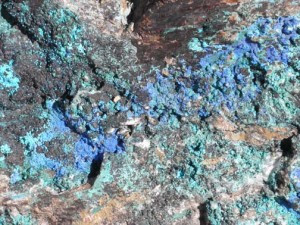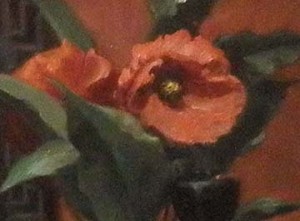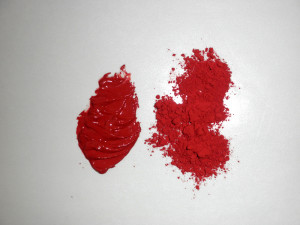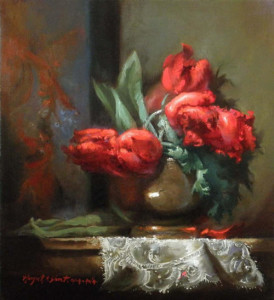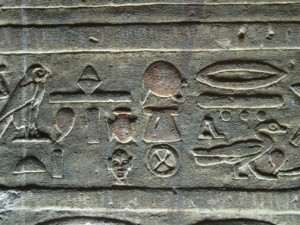One of the most spectacular mineral colors is azurite/malachite, which was at one time abundant and found in many places around the world including Arizona. It has been used by both artists of the past and today. This magnificent chunk is at the Tohona Botanical Garden in Tucson, AZ. The color absolutely made my heart go flip flop when I first … [Read more...] about Uber Azurite
cinnabar
Cinnabar
My favorite red pigment used by ancient Greeks is cinnabar. It was a perfect hue to use on these poppies. I used burnt umber and madder for the shadow tones, and heightened the lights with yellow ochre and white. A very similar hue can be attained by using vermilion, a much more intense in color. Just calm the heat with a nice earthy … [Read more...] about Cinnabar
Naturally Red
Shown below is my favorite red, cinnabar. It is a pigment found as a mineral in nature and can have a wide variety of hues from bright fire red to a more subtle coral red. The principle property is mercury. It can have striations of opal, quartz, calcite and other minerals. According to Anita Albus in her book, Art of Arts, it is a Greek word, … [Read more...] about Naturally Red
A Discriminating Palette
Greek painters, especially those from the 5th century BCE, were remarkably skilled and created many hundreds of vases and other paintings. The many varieties of surfaces include terracotta plaques, walls, ceilings, panels, wood, marble, ivory, leather, parchment, and ceramic slabs. They used some of the most beautiful natural and synthetic pigments … [Read more...] about A Discriminating Palette
Doorman’s Record Tulipa
Cupid's Arrow 11x10 Oil on Linen Margret E. Short copyright 2010 CM Russell Museum Masters in Miniature 2010 July 29 through September 11 Great Falls, Montana Being the hopeless and helpless mad scientist, I just can't help playing around with colors. Over the past while, RED has been on my palette and has been manipulated and pushed like … [Read more...] about Doorman’s Record Tulipa
Animal, Vegetable, or Mineral?
I read an interesting tidbit in the Parade Magazine, Sunday Oregonian, April 19, 2009 in the Ask Marilyn column. A reader asked about carbon dating cave paintings made with paint composed of minerals. Marilyn replied that carbon dating can determine the age of artifacts made of organic matter such as cloth, bone, and wood. If painting was done in … [Read more...] about Animal, Vegetable, or Mineral?

